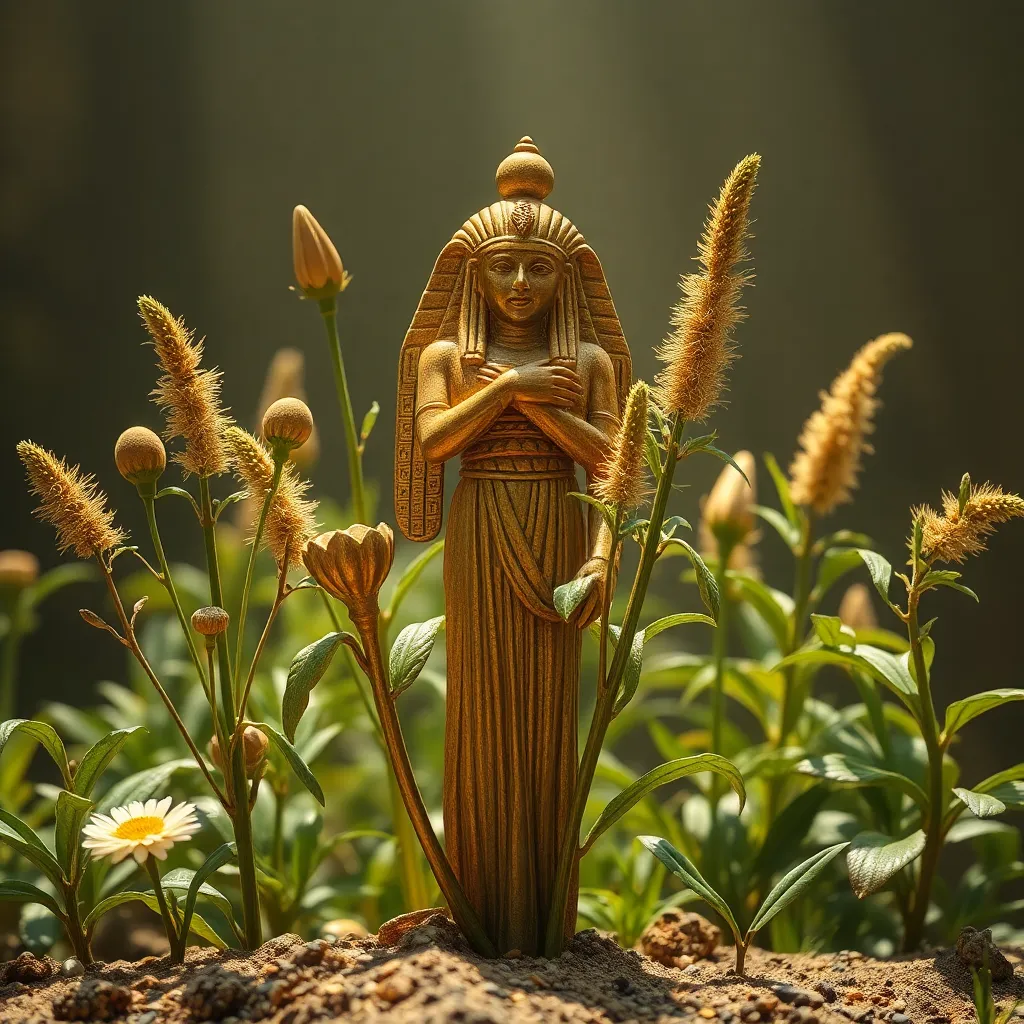Mythological Stories Behind Egyptian Sacred Plants
I. Introduction
The ancient Egyptian civilization is renowned for its rich tapestry of mythology, religion, and art, where every aspect of life was intricately interwoven with the natural world. Among the most significant elements of their cultural fabric were plants, which held profound meaning in their religious beliefs and daily practices.
This article explores the intersection of mythology and botany in ancient Egypt, focusing on sacred plants that were revered and imbued with powerful narratives. These plants were not only essential for survival but also served as symbols of life, death, and the divine.
II. The Role of Plants in Ancient Egyptian Religion
Plants in ancient Egyptian culture were seen as more than mere flora; they were vital symbols reflecting the cycle of life and death. The Egyptians believed that certain plants had the power to connect them with the divine realm.
- Plants as symbols of life and death: Many plants represented the duality of existence, embodying both regeneration and mortality.
- Sacred groves and gardens in temples: Temples often featured sacred gardens where plants were cultivated for rituals, enhancing the spiritual atmosphere.
- The importance of agriculture: Agriculture was not only crucial for sustenance but also played a vital role in maintaining the divine order, reflecting cosmic harmony.
III. The Lotus Flower: Birth and Creation
The lotus flower holds a special place in Egyptian mythology as a symbol of creation and rebirth. It is intrinsically linked to the sun god Ra, who was believed to emerge from a lotus at the beginning of time.
According to the creation myth, as the sun rose, the lotus would open, symbolizing the birth of the day and the universe. This connection to Ra made the lotus a potent emblem of life and regeneration.
In art and architecture, the lotus was frequently depicted in various forms, such as:
- Decorative motifs in temple columns
- In sculptures and reliefs
- As offerings in funerary practices
IV. The Papyrus Plant: Writing, Wisdom, and Afterlife
The papyrus plant was another essential element of ancient Egyptian culture, primarily known for its use in writing and documentation. As the medium on which sacred texts and administrative records were inscribed, papyrus became a symbol of knowledge and wisdom.
Associated with the god Thoth, the deity of wisdom and writing, papyrus signifies the importance of knowledge in navigating both earthly and divine realms. Thoth was often depicted with a papyrus scroll, further emphasizing its significance.
Moreover, papyrus played a crucial role in funerary practices, symbolizing the journey to the afterlife:
- Scrolls containing spells and prayers were often crafted from papyrus.
- It was believed to aid the deceased in their journey through the underworld.
V. The Sycamore Tree: Nourishment and Protection
The sycamore tree was revered as a symbol of maternal care and protection in ancient Egyptian mythology. It was often associated with the goddess Hathor, who represented motherhood, love, and joy.
Myths surrounding the sycamore tree depict it as a nurturing entity, providing shade and sustenance. It was believed that the souls of the deceased could find refuge in its branches, where they would be protected and nourished.
In funerary practices, the sycamore tree played a vital role:
- It was often depicted in tomb art, symbolizing the afterlife.
- Offerings were made at sycamore trees in hopes of receiving blessings for the deceased.
VI. The Frankincense and Myrrh: Sacred Resins in Rituals
Frankincense and myrrh were two highly valued resins used extensively in ancient Egyptian religious ceremonies and rituals. These substances were not only prized for their aromatic qualities but also held significant mythological connections.
Both resins were associated with various gods and the afterlife:
- Frankincense was linked to the sun god Ra and was used to honor the deities.
- Myrrh was associated with the goddess Isis, often used in embalming to preserve the dead.
The trade of these resins was vital for the economy, as they were sought after not only in Egypt but also in surrounding regions, thus highlighting their cultural significance.
VII. Other Notable Sacred Plants and Their Myths
In addition to the lotus, papyrus, and sycamore, several other plants held sacred status in ancient Egyptian mythology:
- Willow: Associated with mourning and the afterlife, often depicted in funerary art.
- Olive: Symbolized peace and was used in rituals and offerings.
- Persea: Known for its association with the gods, particularly in creation myths.
The botanical diversity of Egypt contributed to its rich spiritual landscape, with each plant carrying its unique myths and associations that reflected the beliefs of the time.
VIII. Conclusion
Plants played a vital role in the mythology of ancient Egypt, serving as symbols of life, death, and divine connection. The sacred plants discussed in this article, including the lotus, papyrus, and sycamore, illustrate the deep relationship between nature and spirituality in this ancient civilization.
Today, these stories continue to resonate, reminding us of the complexities of human interaction with the natural world. Understanding these ancient narratives enriches our appreciation of both history and the ongoing cultural significance of plants in contemporary life.




